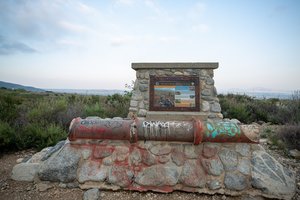
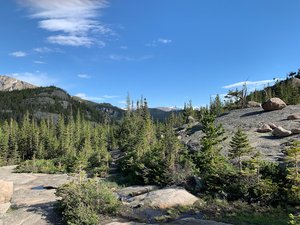
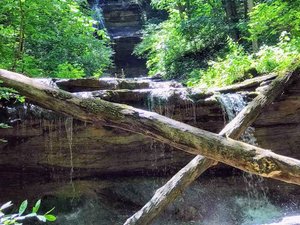
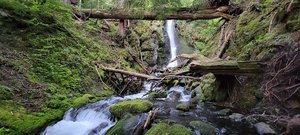
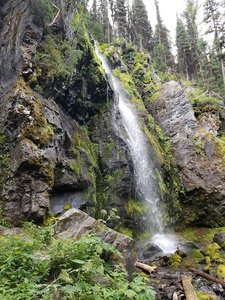
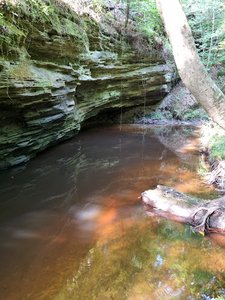
Explore our comprehensive guide to the most stunning waterfalls across the United States
Discover our handpicked selection of the most spectacular waterfalls in the United States






Discover exciting activities to enjoy at America's most beautiful waterfalls
Explore scenic trails leading to hidden waterfalls across America's diverse landscapes
Capture stunning images of cascading water, mist, and surrounding landscapes
Cool off in refreshing natural pools formed by waterfalls during summer months
Learn the best times to visit waterfalls throughout the year
Peak waterfall season with maximum water flow from snowmelt and spring rains. Vibrant greenery and wildflowers enhance the experience.
Warm weather allows for swimming in waterfall pools. Some smaller falls may have reduced flow during late summer.
Spectacular fall foliage creates stunning backdrops for waterfalls. Moderate water flow and fewer crowds.
Frozen waterfalls create magical ice formations. Access may be limited due to snow and ice.
Make the most of your waterfall adventures with these helpful tips
Stay on designated trails, wear appropriate footwear, and never climb on wet rocks near waterfalls. Be aware of flash flood dangers during rainy seasons.
Bring a tripod for long-exposure shots that create silky water effects. Early morning or late afternoon light provides the best conditions for waterfall photography.
Waterproof gear, extra clothes, water, snacks, insect repellent, and a first aid kit. Consider bringing trekking poles for steep or slippery trails.
Respect nature by taking all trash with you, staying on designated paths, and leaving natural features undisturbed for others to enjoy.
Read what other waterfall enthusiasts have to say about their adventures
"One of the most breathtaking waterfalls I've ever seen. The two-tiered cascade is magnificent, and the historic bridge adds to the charm. Worth visiting year-round!"
"The turquoise waters against the red canyon walls create an otherworldly scene. The hike is challenging but absolutely worth it for this paradise in the desert."
"An impressive underground waterfall with beautiful lighting. The cave tour is educational and fascinating. Gets crowded during peak season, so go early."
Find answers to common questions about visiting waterfalls
Spring (March to May) is generally the best time to visit waterfalls as snowmelt and spring rains create maximum water flow. However, each waterfall has its own optimal viewing season. Summer offers swimming opportunities, fall provides beautiful foliage backdrops, and winter showcases unique ice formations at some waterfalls.
Some waterfalls have designated swimming areas that are safe, but many waterfalls are dangerous for swimming. Never swim directly under a waterfall due to undertow currents, submerged objects, and falling debris. Always check local regulations and safety advisories before swimming, and never dive into waterfall pools as water depth can be deceiving.
Essential items include: sturdy hiking shoes with good traction, water and snacks, sun protection (hat, sunscreen), insect repellent, a map or GPS device, first aid kit, and a camera. For photography, consider bringing a tripod and polarizing filter. If planning to swim, pack a towel and water shoes. Always carry out all trash.
Many national and state parks have made efforts to create accessible viewing platforms for popular waterfalls. Look for waterfalls with paved paths, boardwalks, or designated accessible trails. Our waterfall listings include accessibility information when available. Some notable accessible waterfalls include Multnomah Falls in Oregon, Niagara Falls in New York, and Bushkill Falls in Pennsylvania.
Waterfalls form when a river or stream flows over resistant bedrock and then meets less resistant rock or a fault line. The softer rock erodes faster, creating a vertical drop. Over time, the force of the water continues to erode the cliff, causing the waterfall to recede upstream. Waterfalls can also form from glacial hanging valleys, along fault lines, or where rivers flow over the edge of a plateau.
While both involve flowing water descending vertically, a waterfall typically has a single vertical drop where water falls freely through the air. A cascade is a series of small falls or a waterfall that descends over rocks in a gradual, stair-step fashion rather than in one sheer drop. Cascades often appear as a sequence of smaller waterfalls flowing over a steep, rocky slope.